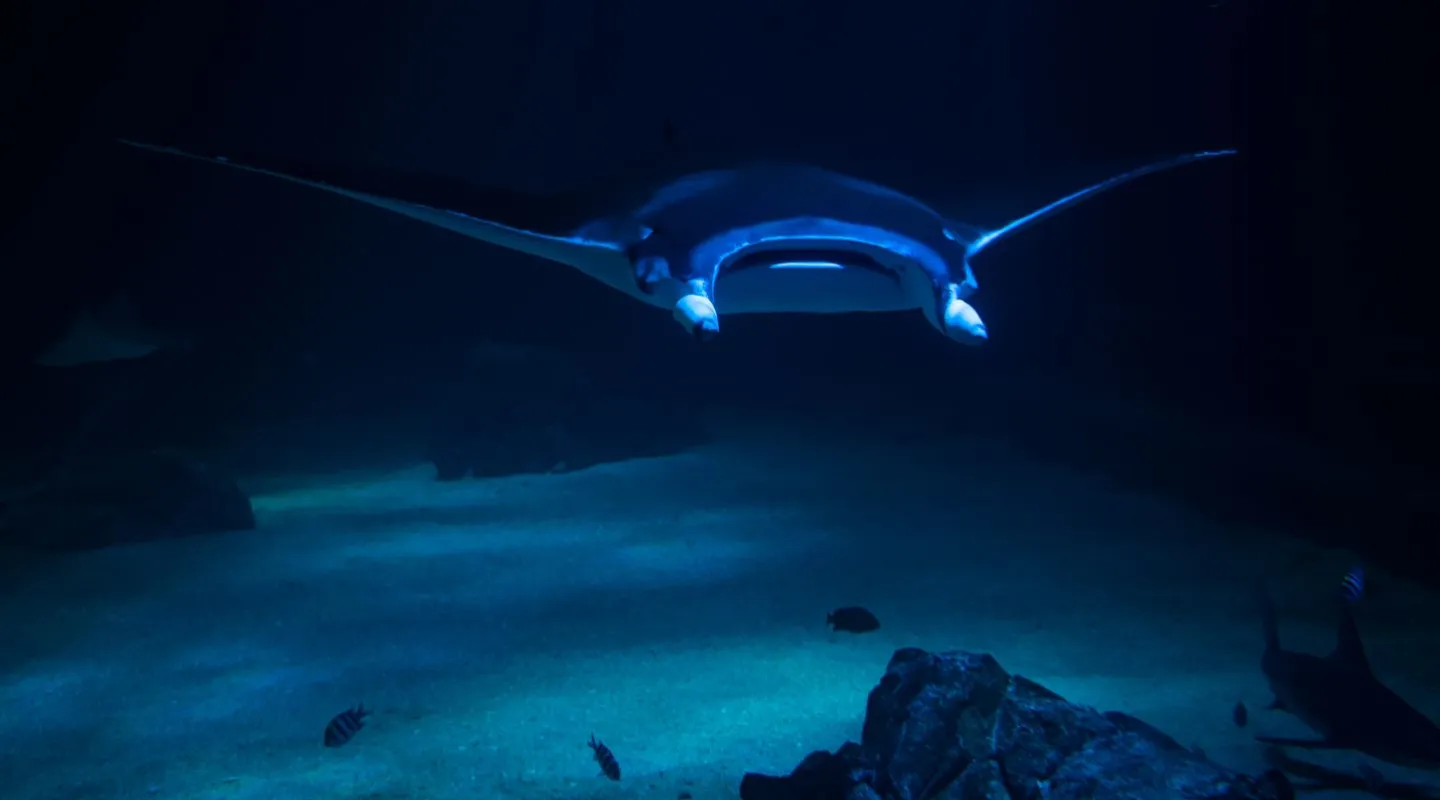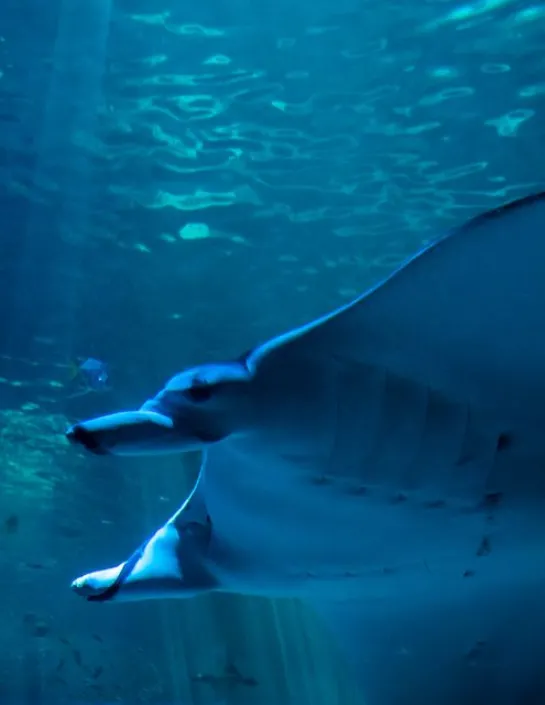Despite being harmless to humans, this huge and elegant ray features in many legends, in which it drags boats down into the deep.
In reality, it is very sociable with divers.

Rays

Identity card
Annexe II
It is found in tropical areas all over the world and in temperate warm areas of the Atlantic.
It lives close to the surface, at depths of between 0 and 1000 metres.
Giant manta rays can reach 8 metres in length and can weigh up to 1,8 tonnes.
Plankton, small fish and crustaceans.
20 years

These rays can jump out of the water. It is sometimes when this happens that they give birth to their young.
Despite being harmless to humans, this huge and elegant ray features in many legends, in which it drags boats down into the deep.
In reality, it is very sociable with divers.
It lives close to the surface, at depths of between 0 and 1000 metres. Its distribution is very localised on reefs.
Giant manta rays gather at the highest points, where the currents carry along the plankton on which they feed. They supplement their diet with small fish and crustaceans.
It can be recognised by the two cephalic outgrowths on either side of its mouth.
The manta ray is ovoviviparous, which means that eggs hatch inside the female’s body. The young are already independent when they come out of the mother’s belly. Mothers generally give birth to one baby at a time.
The oceanic manta ray is protected in over a dozen countries and territories. Fishing still exists in some areas. It also suffers from being caught accidentally.
JOURNEY ON THE HIGH SEAS
The Ocean Mag
In the spotlight
Found in all the world's seas, the jellyfish intrigues and fascinates. But watch out, you might get burnt !

Article
Combining art, science and industry to restore coral reefs.
Article
No mining exploration in Norwegian Arctic waters in 2025.